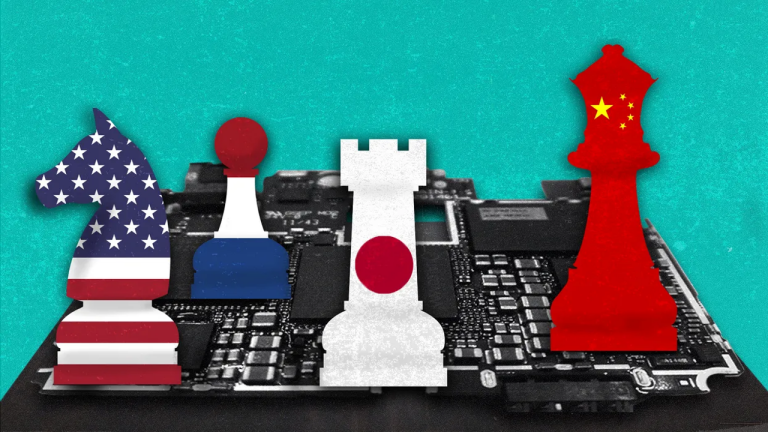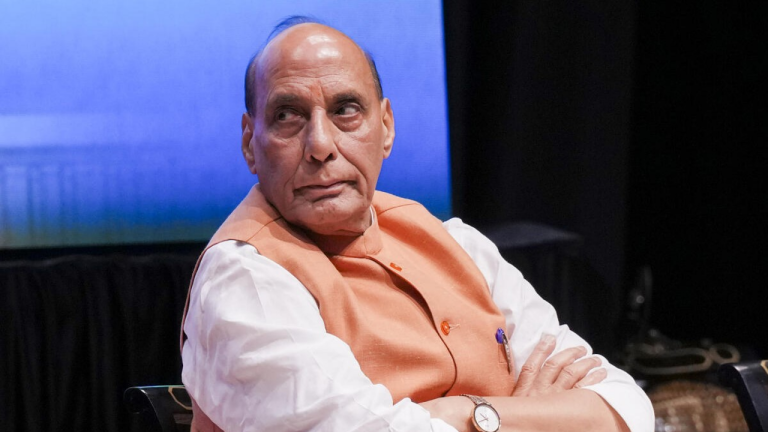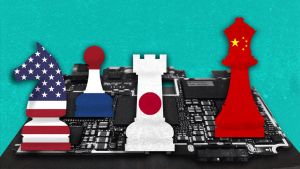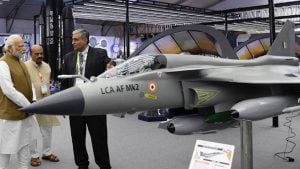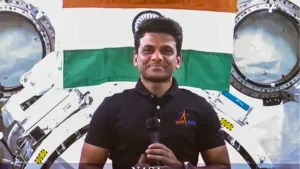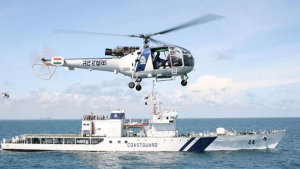India, France decide to expand cooperation in IOR
- Defence Minister Rajnath Singh and his French counterpart Florence Parly on Thursday held extensive talks during which they vowed to step up cooperation in the Indian Ocean, a region which is witnessing rising Chinese military posturing.
- It is learnt that Singh also apprised Parly on India’s four-month-long border row with China in eastern Ladakh.
- Official sources said the two sides reviewed the entire gamut of bilateral cooperation and exchanged views on contemporary regional and global security issues of mutual interest.
- The two ministers emphasised the need to work closely keeping in view the joint strategic vision of India-France cooperation in the Indian Ocean region.
- The talks took place at Ambala Air Force station after a ceremony marking induction of five Rafale jets into the Indian Air Force.
- Singh and Parly held a brief conversation at the Air Force station in Palam in Delhi shortly after her arrival on Thursday morning.
- The Indian Navy has significantly expanded its deployment in the Indian Ocean Region, stationing a plethora of warships and submarines following the border row in eastern Ladakh to send across a message to Beijing. The maritime space around the Malacca Strait is very critical for China’s supply chain through sea routes.
- After returning to Delhi in the afternoon, Parly held talks with NSA Ajit Doval focusing on ways to further boost bilateral defence and security cooperation.
- In her brief address at the ceremony, Parly said France is fully committed to integrate the Indian defence industry with France’s global military supply chain, while calling the induction of the Rafale jets into the IAF a new chapter in bilateral defence ties.
- “The strategic partnership between France and India is based on common values and friendship forged over several decades,” she said.
- “Since India’s independence, our two democracies have been cooperating very closely. France has always stood beside India in good and bad times,” she said.
- In Delhi, Parly visited the national war memorial and paid tributes to India’s fallen heroes.
India, China agree on 5-point plan for resolving border standoff in eastern Ladakh
- India and China have agreed on a five-point plan for resolving the prolonged border face-off in eastern Ladakh that included abiding by all existing agreements and protocol on management of the frontier, maintaining peace and tranquility and avoiding any action that could escalate matters. The two countries agreed to the plan during talks between External Affairs Minister S Jaishankar and his Chinese counterpart Wang Yi in Moscow on Thursday evening on the sidelines of a Shanghai Cooperation Organisation (SCO) meet.
- The Indian Army and the Chinese People’s Liberation Army(PLA) have been locked in a tense standoff in multiple areas along the Line of Actual Control(LAC) in eastern Ladakh since early May.
- The Ministry of External Affairs(MEA) issued a joint press statement early on Friday featuring five points which were agreed by both the sides at the “frank and constructive” discussions by the two ministers.
- “The two foreign ministers agreed that the current situation in the border areas is not in the interest of either side. They agreed, therefore, that the border troops of both sides should continue their dialogue, quickly disengage, maintain proper distance and ease tensions,” it said.
- The joint statement said Jaishankar and Wang agreed that both sides should take guidance from the series of consensus reached between leaders of the two countries on developing India-China relations, including not allowing differences to become disputes.
- This assessment was a clear reference to decisions taken by Prime Minister Narendra Modi and Chinese President Xi Jinping at their two informal summits in 2018 and 2019.
- “The two ministers agreed that both sides shall abide by all the existing agreements and protocol on China-India boundary affairs, maintain peace and tranquillity in the border areas and avoid any action that could escalate matters,” the joint statement said.
- At the talks, Jaishankar and Wang agreed that as the situation eases on the border, the two sides should expedite work to conclude new confidence building measures to maintain and enhance peace and tranquillity in the border areas.
- The joint statement said the two sides also agreed to continue to have dialogue and communication through the Special Representative(SR) mechanism on the India-China boundary question.
- “They also agreed in this context that the Working Mechanism for Consultation and Coordination on India-China border affairs (WMCC) should also continue at its meetings,” it added.
Modi and Abe hold summit dialogue over phone; Indo-Japan Navy pact announced
- India and Japan on Thursday held their annual summit in a unique fashion over the telephone as Delhi and Tokyo concluded the much-anticipated Mutual Logistic Pact for their Navies to ensure a free and open Indo-Pacific region amid China’s aggressive policies.
- This was outgoing Japanese PM Shinzo Abe’s first summit talk since he decided to step down last month over health reasons. But both sides decided to go ahead with the leadership level dialogue as scheduled on September 10. Modi and Abe to hold summit dialogue notwithstanding resignation tendered by the latter.
- “With regard to the significant enhancement of Japan-India relations in recent years, Prime Minister Abe stated that both Prime Ministers took actions towards realizing the vision of a Free and Open Indo-Pacific and the Special Strategic and Global Partnership between Japan and India was elevated to greater heights, “ according to a readout issued by the Japanese government following the conversation.
- “In this context, both Prime Ministers welcomed the signing of the Agreement between the Government of Japan and the Government of the Republic of India Concerning Reciprocal Provision of Supplies and Services between the Self-Defense Forces of Japan and the Indian Armed Forces (so-called “Acquisition and Cross-Servicing Agreement”, or ACSA) on September 9.”
- Japanese envoy to India Satoshi Suzuki who signed the pact tweeted, “Great pleasure to sign the agreement concerning reciprocal provision of supplies and services between #JSDF and the #IndianArmedForces. Hope the agreement will further promote cooperation between them.”
- The timing of the pact is significant as it comes amid tensions with China along LAC and Beijing’s aggressive behaviour across the Indo-Pacific region. This agreement will facilitate the smooth provision of supplies and services between the Self-Defense Forces of Japan and the Indian Armed Forces. It will also promote closer cooperation between the forces on the ground, thereby contributing further to global peace and security.
- The ACSA (commonly referred to as Mutual Logistics Services Pact) would permit the Indian Navy access to a Japanese base in Djibouti. The Japan Maritime Self Defence Force (JSDF) would be permitted to use India’s military installations in the Andaman and Nicobar Islands. India currently has similar pacts with the US, Australia, France and is likely to sign one with Russia later this year.
- During the conversation Abe explained that he would resign from his position as Prime Minister. He also noted the memories from their mutual annual visits, according to the readout. Modi responded by expressing his appreciation to all the efforts extended by Prime Minister Abe and by recalling the time they spent together, according to the readout.
- Both Prime Ministers affirmed that the basic policy of Japan-India-emphasis remains unchanged and concurred with each other that the two countries continue to work closely in such areas as security, economy, and economic cooperation including the high-speed rail project dismissing all speculations about that project in Western India.
- Abe has been a pillar of strength for India’s Look East and Act East policy – a leader who developed strong ties with former PM Manmohan Singh as well as PM Narendra Modi. Abe became the first Japanese prime minister to attend India’s Republic Day parade as the chief guest in 2014. The partnership blossomed based on a strong chemistry between Abe and Modi and the Indian PM once hosted him in Ahmedabad and gave him a rousing reception.
- It was Abe who proposed Indo-Pacific construct and partnership across the region based on confluence of two seas (during his 2007 speech in Indian Parliament) and ushered in the Asia Africa Growth Corridor with India as a key partner amid Beijing’s BRI and Maritime Silk Route initiatives. Modi and Abe introduced steps to upgrade strategic partnership to the next level, a remarkable achievement for a Pacifist nation. The Quadrilateral format was revived, and Japan re-joined Malabar naval exercise with India and USA.
China’s new Commando Helicopter
- The Chinese People’s Liberation Army (PLA) unveiled its latest type of transport helicopter, the Aviocopter Z-8L.
- The new 15-ton class helicopter is expected to enter service with aerial assault troops and to play a major role in multiple scenarios including amphibious assault missions.
- Bearing a resemblance to the Leonardo AW101 Merlin, the Z-8L is a derivative of the AC313 civil helicopter, itself a copy of the French SA 321 Super Frelon, the Z-8L is reported to be powered by three WS-6 turboshaft engines.
- In its first official public appearance, a Z-8L helicopter assigned to a Jiangxi-based PLA test flight unit recently went through a series of tests on carrying and lifting a 8×8 Bobcat all-terrain assault vehicle to examine the stability and safety of the transport procedure.
- Equipped with a new type of photoelectric device and self-defence systems including radar warning receiver and infrared decoys, the Z-8L has higher survivability than other current PLA helicopters.
- The Z-8L will be commissioned into the PLA’s aerial assault forces to enhance the troops’ comprehensive transport and overall combat capability. In addition to operating in a wide range of terrains including deserts and mountains, the Z-8L can also join cross-sea amphibious assault missions when operating from the PLAN’s Type 075 amphibious landing and assault ships.
- Additionally, multiple types of helicopters attached to the PLA 71st Group Army recently practiced take-off and landing, replenishment and emergency repair on a civilian semi-submersible ship in the Yellow Sea.
- If missions are performed around large islands or reefs, a large semi-submersible ship can also be deployed at each end of the islands or reefs as maritime relay platforms to further enhance the cross-sea combat capability of the helicopters and to increase the helicopters’ combat radius.
US-made M series carbine rifles found as new weapons for militants in Kashmir
- Three US-made sophisticated M series carbine rifles have been recovered by the police in Kashmir in the last two days. In Baramulla, two such weapons were found in a hideout in Uri near the Line of Control (LoC). Another rifle was recovered while it was being transported in a truck along with other ammunition.
- “The weapons were meant for the new recruits,” said a senior police official in south Kashmir on recoveries from the truck.
- The militants in the valley have mostly been using AK-47 or AK series rifles but these recoveries of more sophisticated American made M series weapons are a cause of concern for the security establishment.
- The recoveries of US-made M series weapons have been increasing in the valley in the past few years. These weapons are more effective but difficult to bring in.
- In 2017, the police from south Kashmir recovered one such rifle and the top brass of the security forces displayed it in a press conference. Three militants of Jaish-e-Mohammed, among them a nephew of the group’s founder Masood Azhar, were killed in the gunfight at Aglar village of Pulwama in November 2017. The police had recovered three weapons, including a short-barrel AK-47 draco rifle, a pistol and the prize catch, M4 carbine.
- While questioned on the origin of such weaponry, the forces had hinted that the Pakistan Army was possibly supplying it.
- “This weapon (M4 carbine) is with the special forces of the Pakistan army. So we have reasons to believe that this was given by the Pakistan Army to Jaish cadres,” said BS Raju, then corps commander 15 Corp.
- The security forces have been saying that the militants in the valley were facing a shortage of weapons due to increase in anti-militancy operations and tightening of grids on the LoC. As per them, constant efforts were being made to push in arms to fuel militancy from across the border.
REVIEW QUESTIONS
- Rajnath Singh and Florence Parly held a brief conversation at which Air Force station shortly after her arrival on Thursday morning for the Rafale induction ceremony?
- AFS Ambala
- AFS Palam
- AFS Gandhinagar
- AFS Jodhpur
ANSWER: B
- Japanese envoy to India
- Satoshi Suzuki
- Sun Weidong
- Baushuan Ger
- Pradeep Kumar Rawat
ANSWER: A
- The Chinese People’s Liberation Army (PLA) unveiled its latest type of transport helicopter which is
- Aviocopter Z-88
- Aviocopter Z-7L
- Aviocopter Z-8L
- Aviocopter Z-22
ANSWER: C







